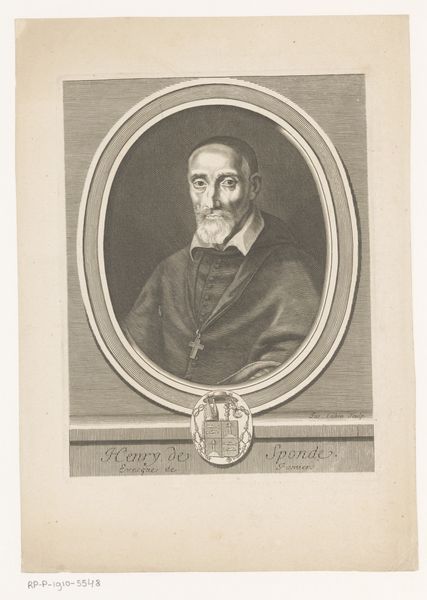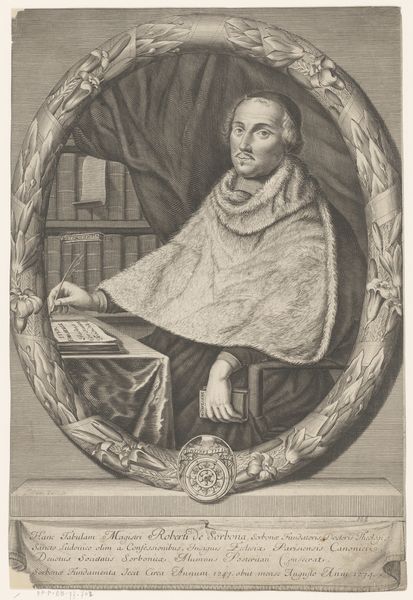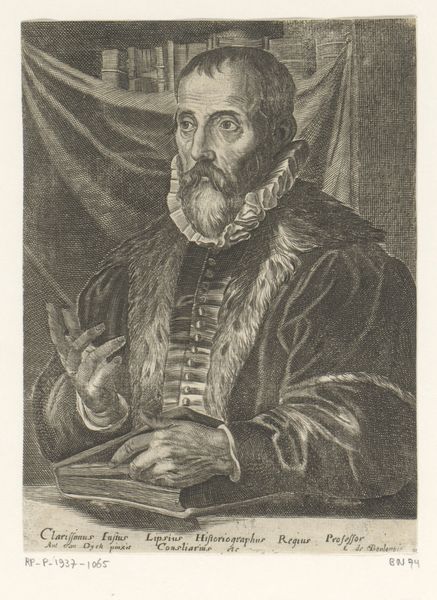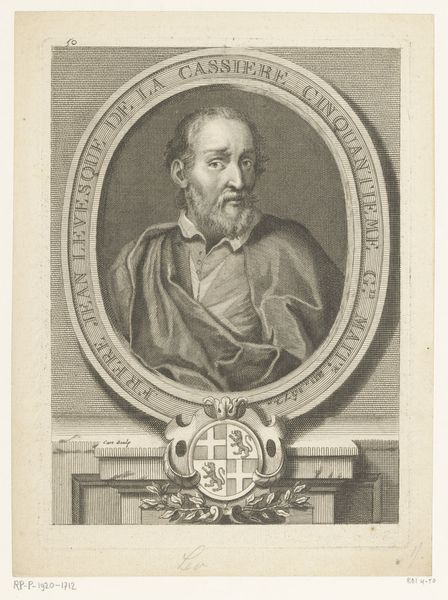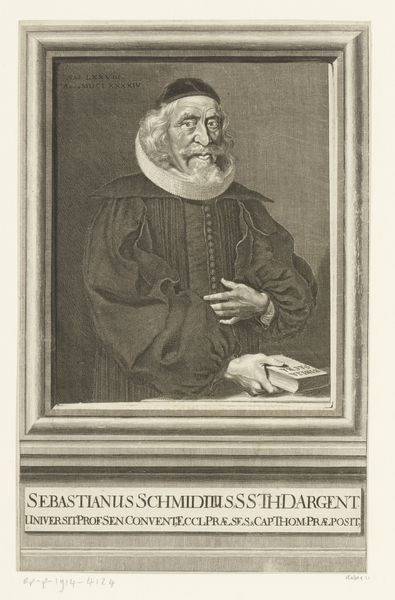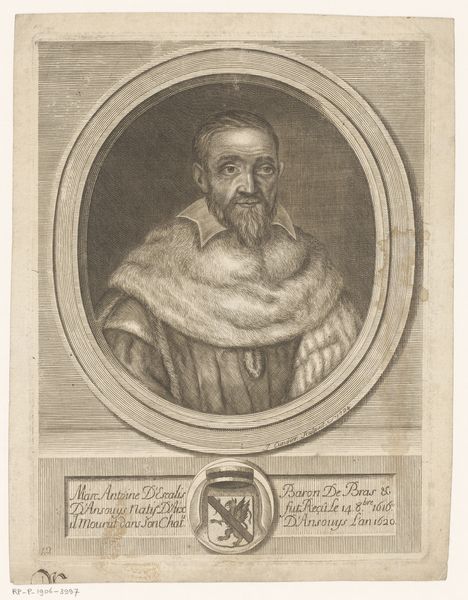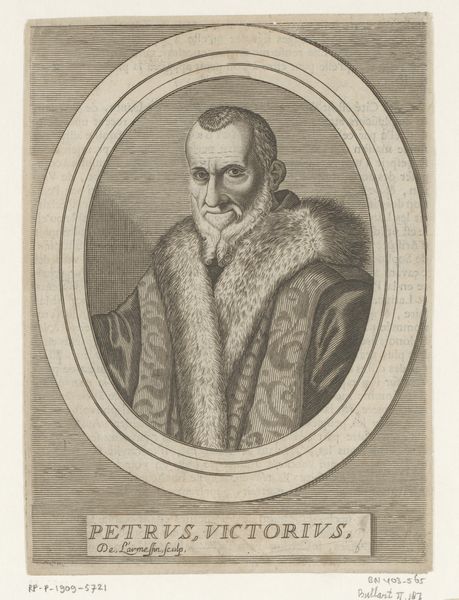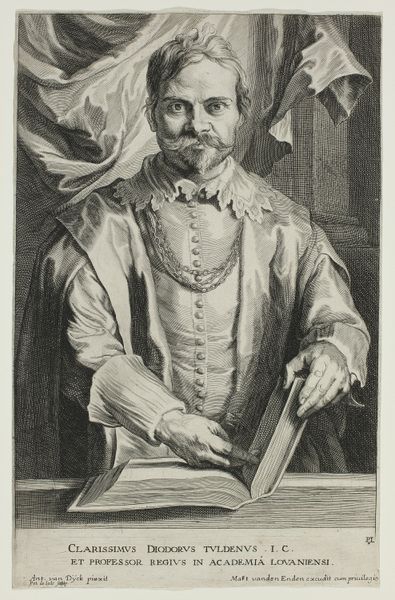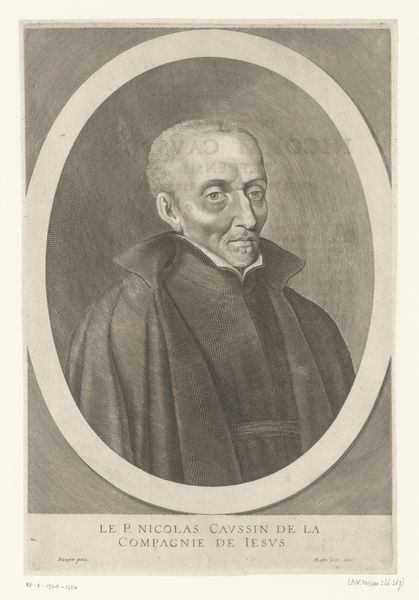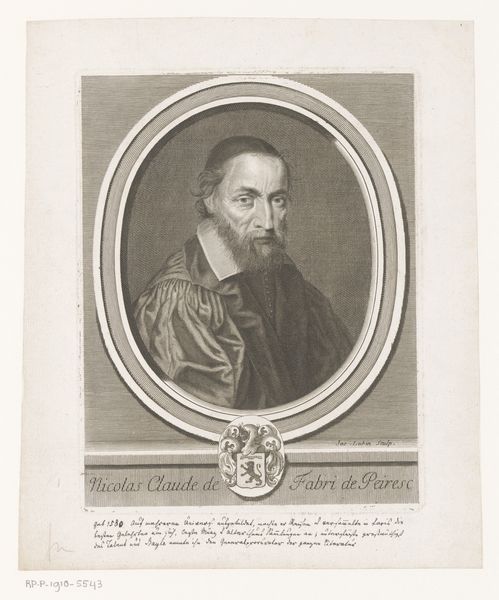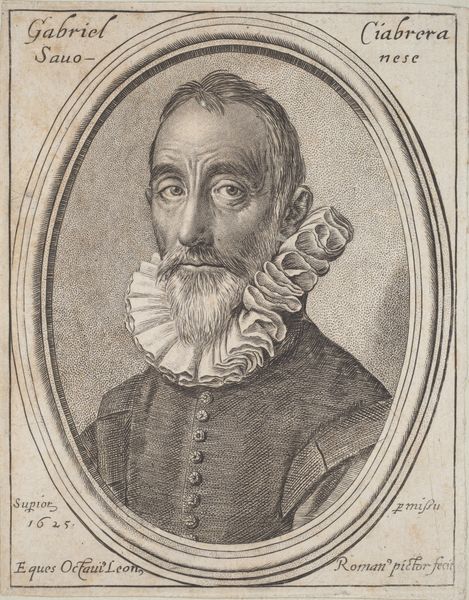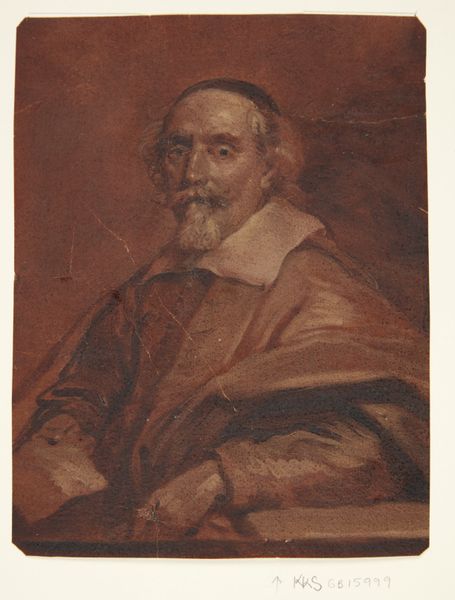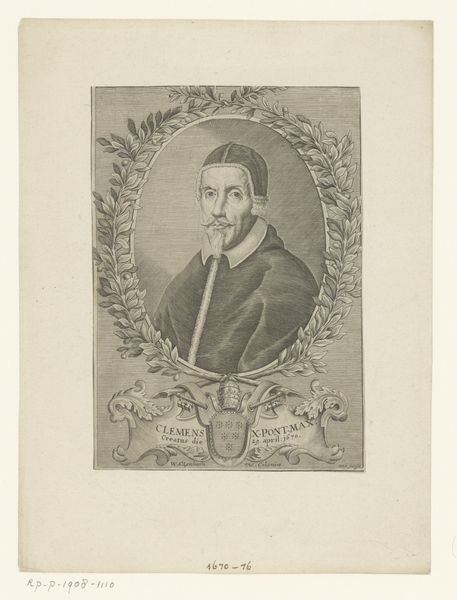
print, metal, engraving
#
portrait
#
aged paper
#
baroque
# print
#
metal
#
portrait drawing
#
history-painting
#
engraving
Dimensions: height 338 mm, width 212 mm
Copyright: Rijks Museum: Open Domain
Curator: This is a portrait of Henri Spondanus, an engraving from the 17th century by Michel Lasne, currently residing here at the Rijksmuseum. Editor: A striking image! My immediate reaction is one of quiet solemnity. The greyscale tones, the subject's gaze, everything feels steeped in contemplative gravity. Curator: Indeed. Notice the precision of Lasne's lines. The textures of the robes, the details in the face—particularly around the eyes and mouth, revealing character—it all contributes to a very realistic rendering. Editor: Absolutely, and realism at that time, the Baroque era, had much to do with who was deemed worthy to have their likeness captured and disseminated through printed portraits such as this. Someone of Spondanus’ status as Bishop was elevated as central to European social life. I’m struck by his age shown in this piece. Curator: The inscription tells us he was 73 years old at the time. What I find compelling is how Lasne uses the cross-hatching to create depth. Observe how the light falls across his face, defining the planes and angles. It creates such a powerful sense of volume. Editor: Yes, the use of light and shadow, the Baroque tenet of chiaroscuro, reinforces his presence but it also has some harsh implications of truth. It’s not possible for a sitter to have such work be airbrushed; the truth is literally engraved! Considering the subject, the details of faith in the background of this portrait offer clues. It suggests, perhaps, Spondanus was intended to exemplify the era's Catholic Reformation ideals. The weight of duty, captured. Curator: I agree; those elements of symbolism, coupled with the pure technique, demonstrate the artistic mastery Lasne brought to the engraving process. The varying line weights… It's quite a study in contrasts, isn't it? Editor: It certainly allows one to reflect on the ways identity was both constructed and communicated in this period, not just through art, but through systems of power and belief that affected every level of society. It makes you consider whose images are still disseminated and how they may reveal and conceal truths. Curator: Yes, precisely. It leaves you considering the dialogue between artistry and intent. Editor: Exactly. Another layer uncovered in this quiet, reflective portrait.
Comments
No comments
Be the first to comment and join the conversation on the ultimate creative platform.
